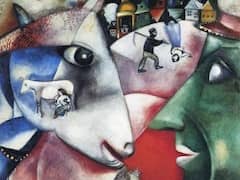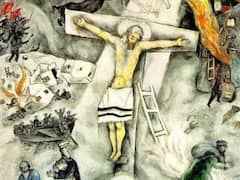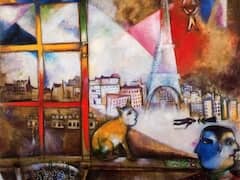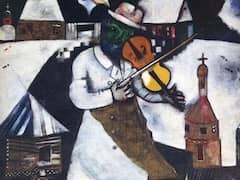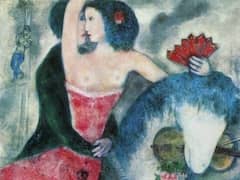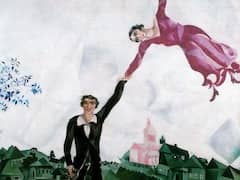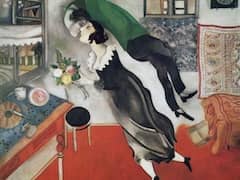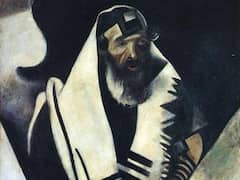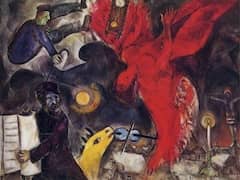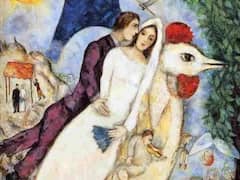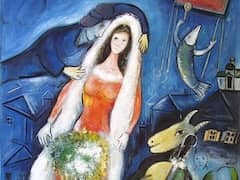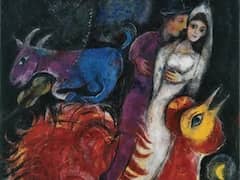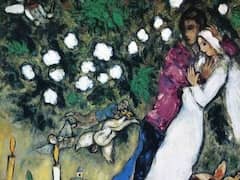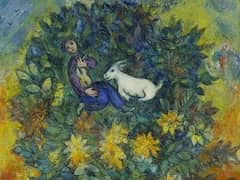The Holy Coachman, 1912 - by Marc Chagall
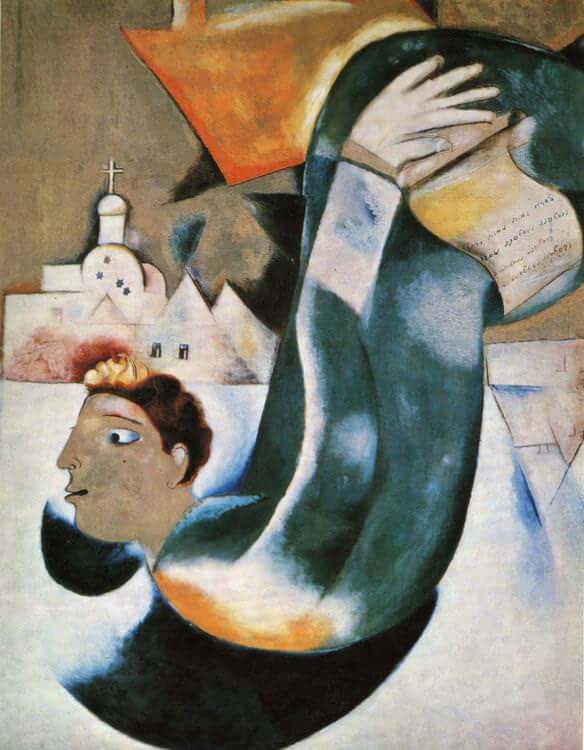
Once Chagall had found the appropriate means of expression, the most remarkable pictures followed. The richer and freer his painting became the stronger grew his visionary faculties, and he willingly submitted to the stream of pictures flowing from the unconscious.
They were all associated with Vitebsk and formed an unbroken bond between him and his recollections of the distant land of childhood. He felt completely uninhibited in his inspired fantasy. His memories included all kinds of droll, grotesque, and absurd incidents which he did not hesitate to include, and indeed his peculiar brand of puckish humor liked to emphasize farcical and absurd aspects. His creations were never intended to be frightening, but were meant to lure out of reality its wondrous, fantastic, and droll elements - that mythical and secret realm Shakespeare displayed so perfectly in A Midsummer Night's Dream. The shock given by the absurd was meant to break t hrough the meshes of logic which limit our perception of reality and to create a pure astonishment at what the real can offer - if for once one tries to stand it on its head. Chagall sometimes provoked such breaks in the logical pattern purposely, or, if they occurred fortuitously, he accepted them to keep his mind open to all sensations and the amazement which is the richest source of poetic awareness.
One of the most remarkable examples is The Holy Coachman. It was painted shortly after To Russia, Asses, and Others and shows similar formal characteristics. The color, however, is more richly modulated. Strident color values are suppressed; instead a muted white, olive green, and dark ochre sound the basic harmony, and are complemented by a deep blue and a heightened sharp red. This more subdued modulation broadens the coloristic experiment which began with the loud and naive color scheme of The Drunkard.
Once again the title comes from Blaise Cendrars, but is not readily understandable when we first look at the figure hurtling down and sliding like a sledge across the snowy field, even if the little flaming coronet - the Jewish prayer cap - on the messenger's head, together with the domed church, suggests something holy. However - the picture is upside down! At the Berlin exhibition of 1914 Herwarth Walden, following some impulse, hung the picture the wrong way up; Chagall, struck by the unexpected apparition of this profane angel bursting upon the scene, accepted the inversion just as he had accepted Cendrars' verbal metaphor, and from then on kept it this way. Such a r eversal, however, was a familiar occurrence in his work. He worked at his pictures from all angles; either way up, one of the houses in the background is always upside down.

